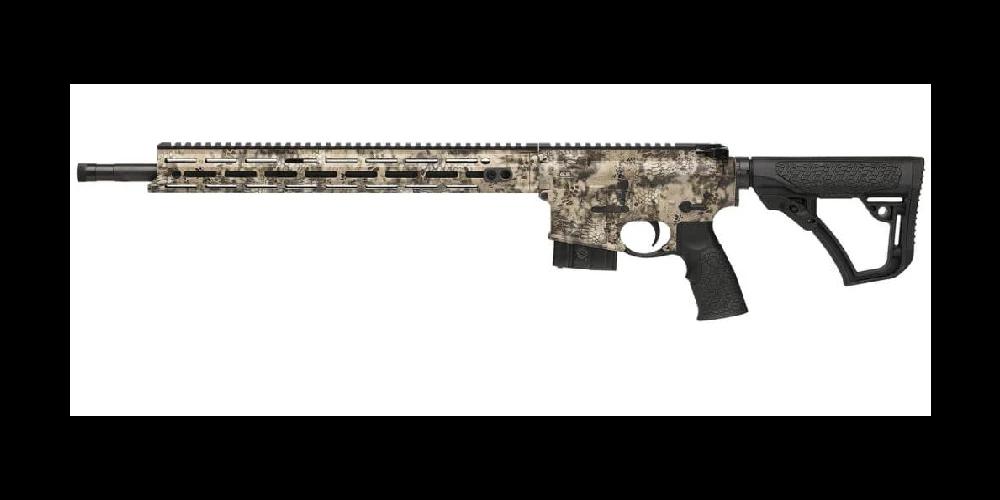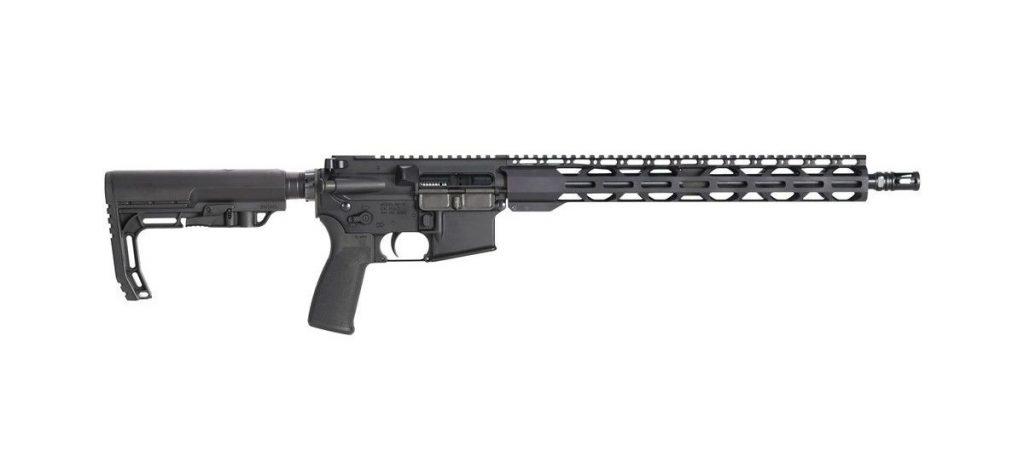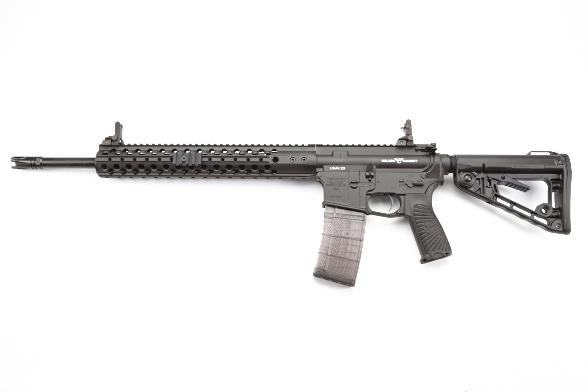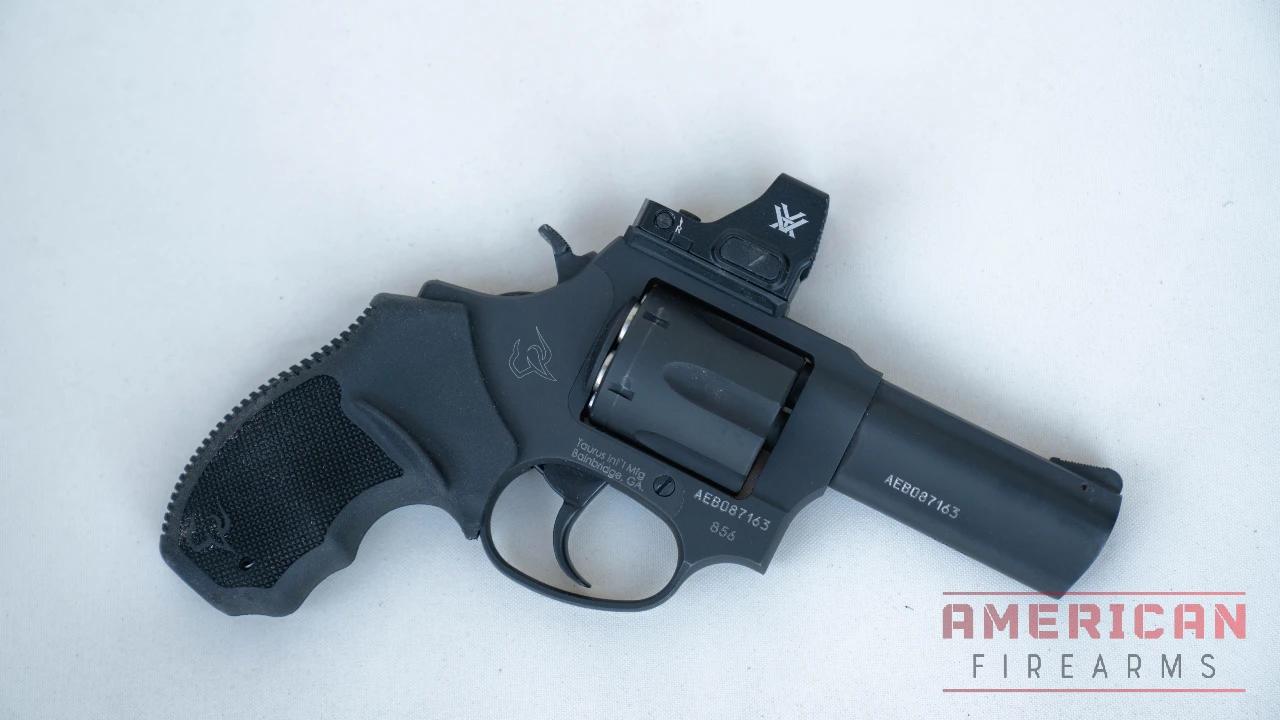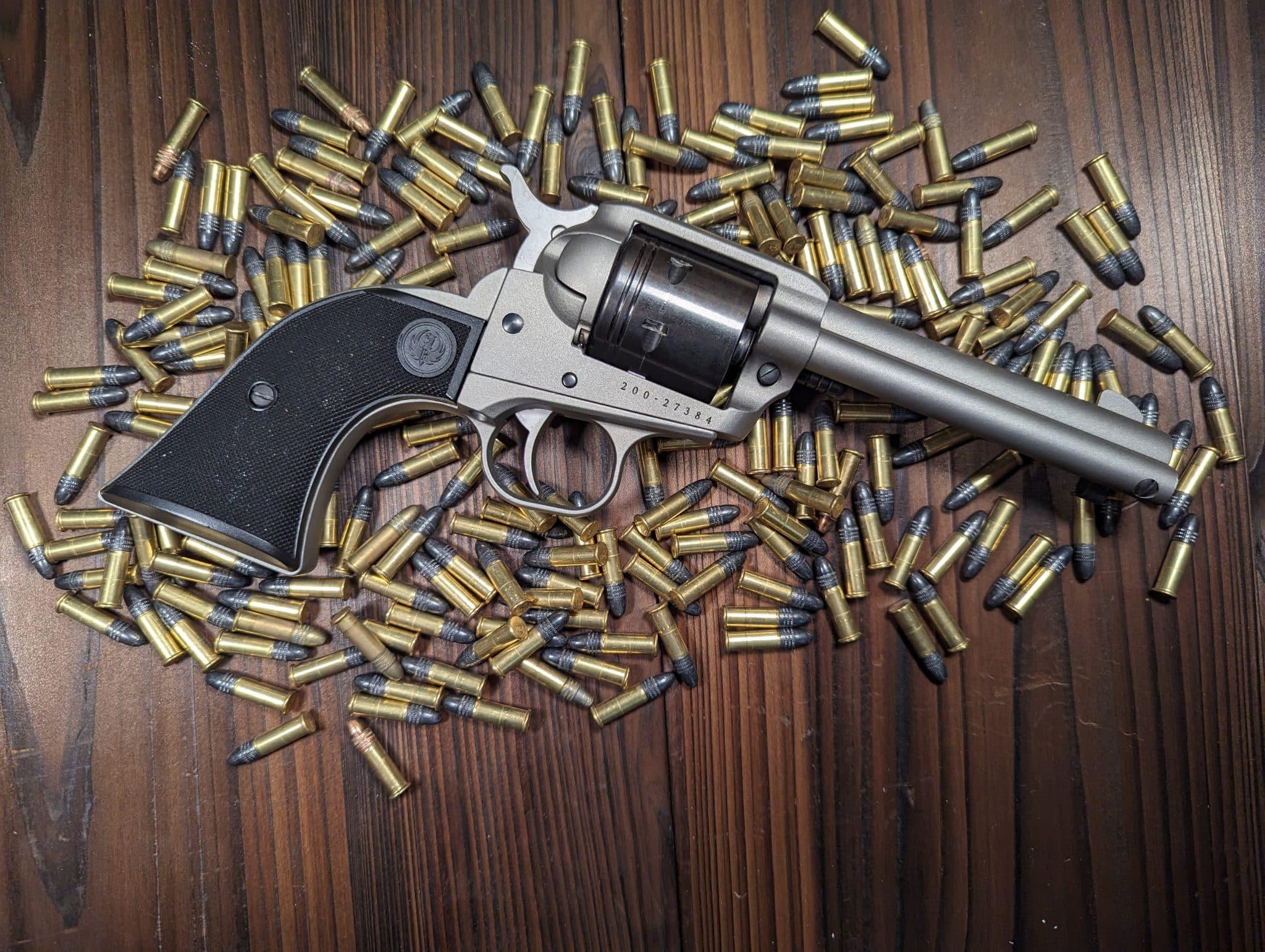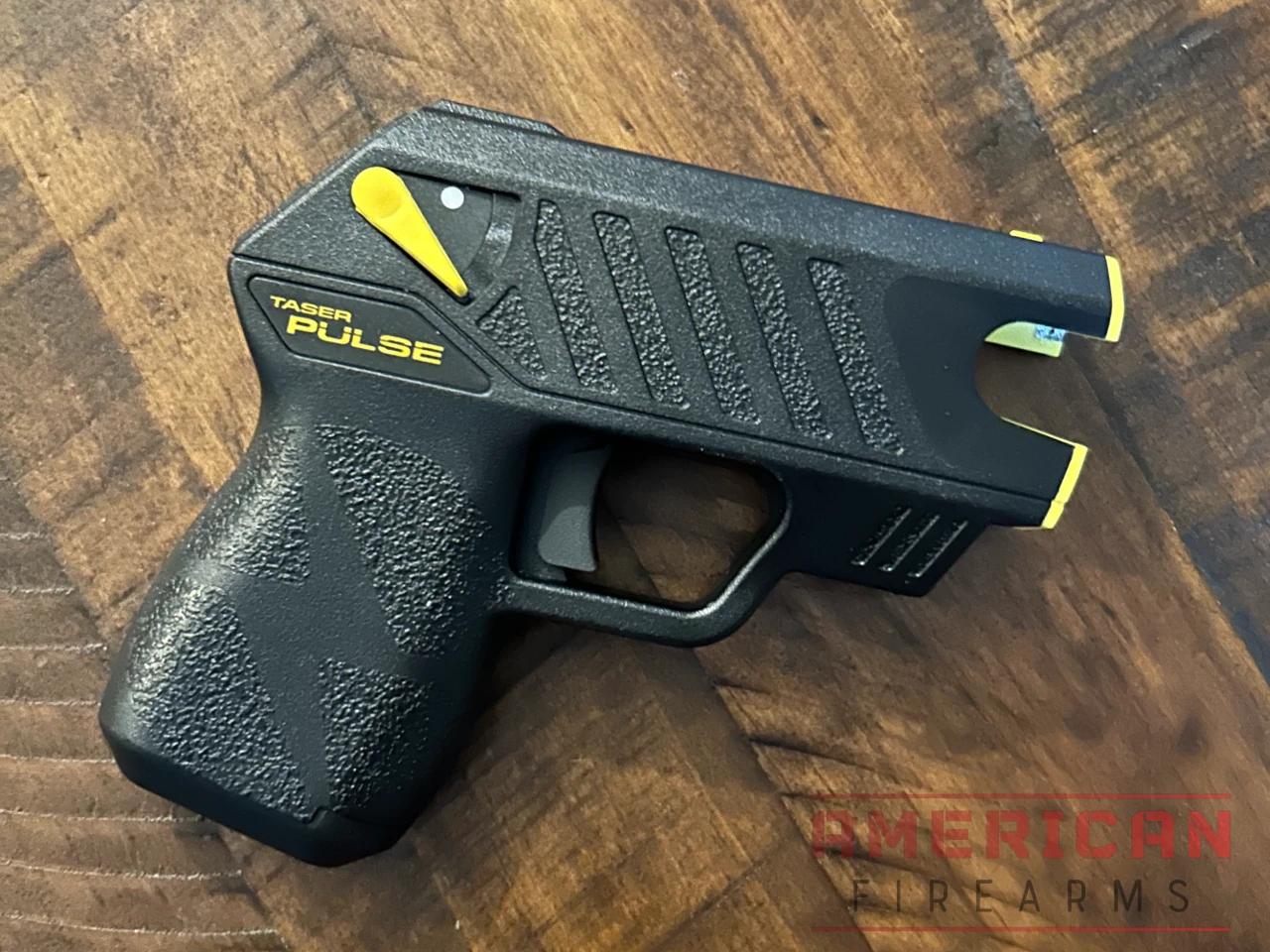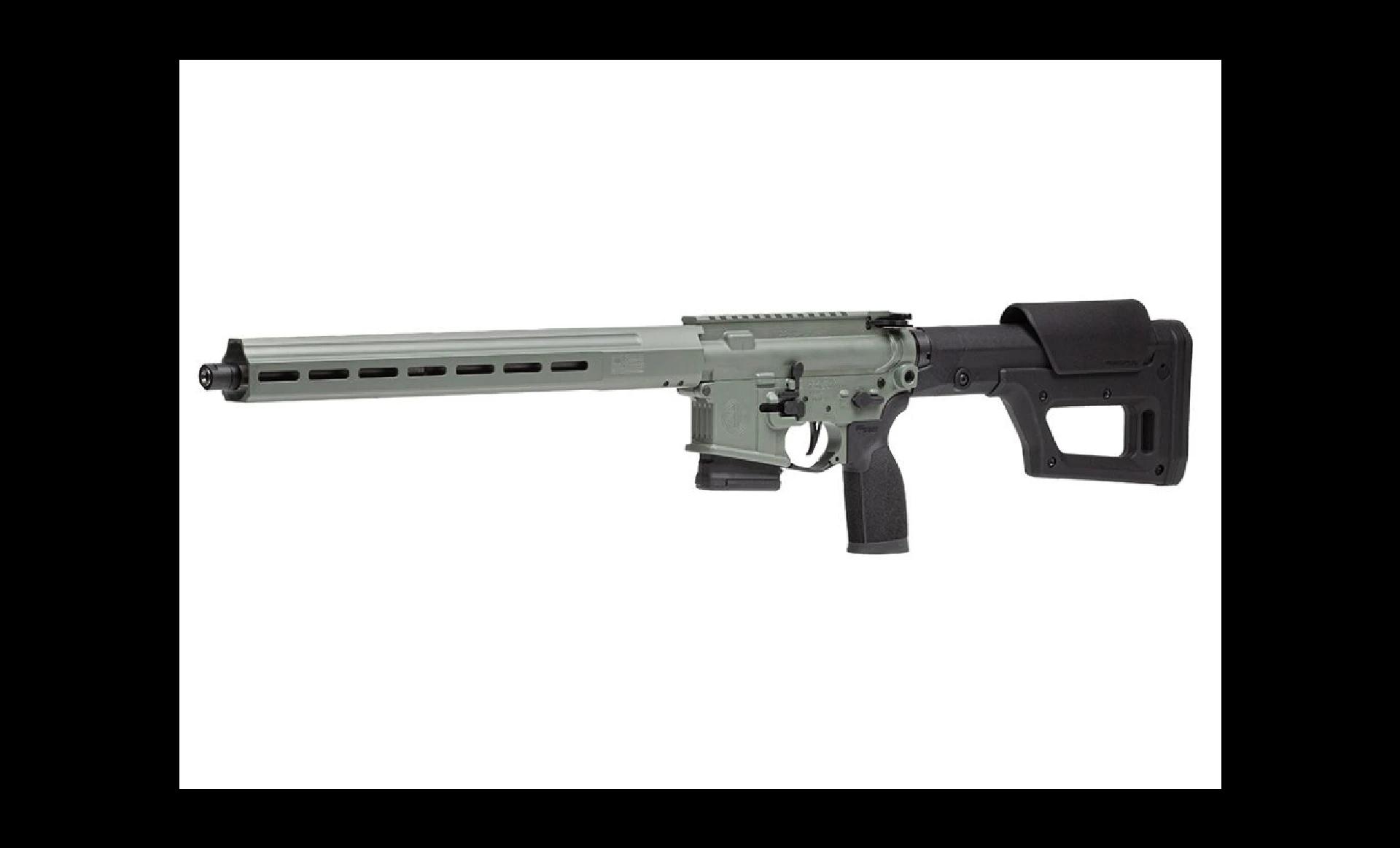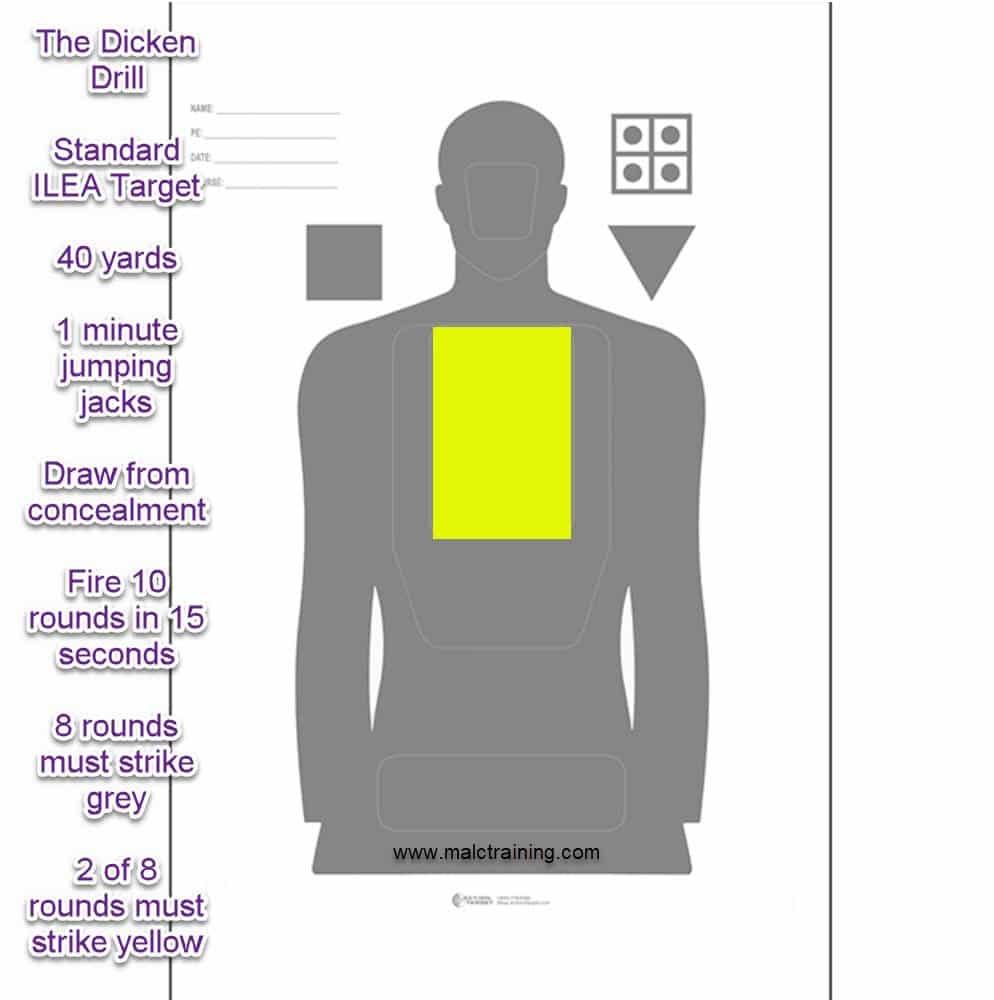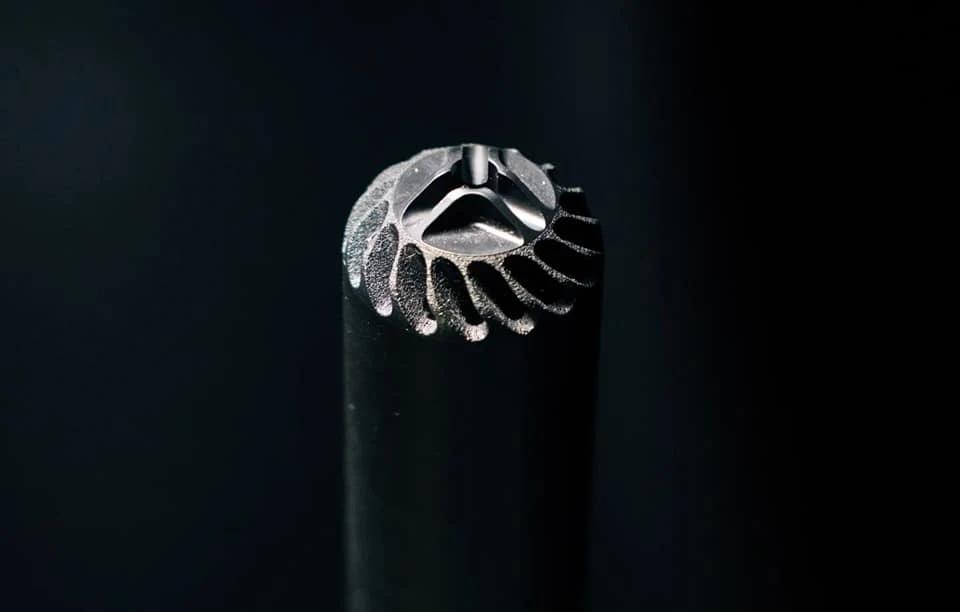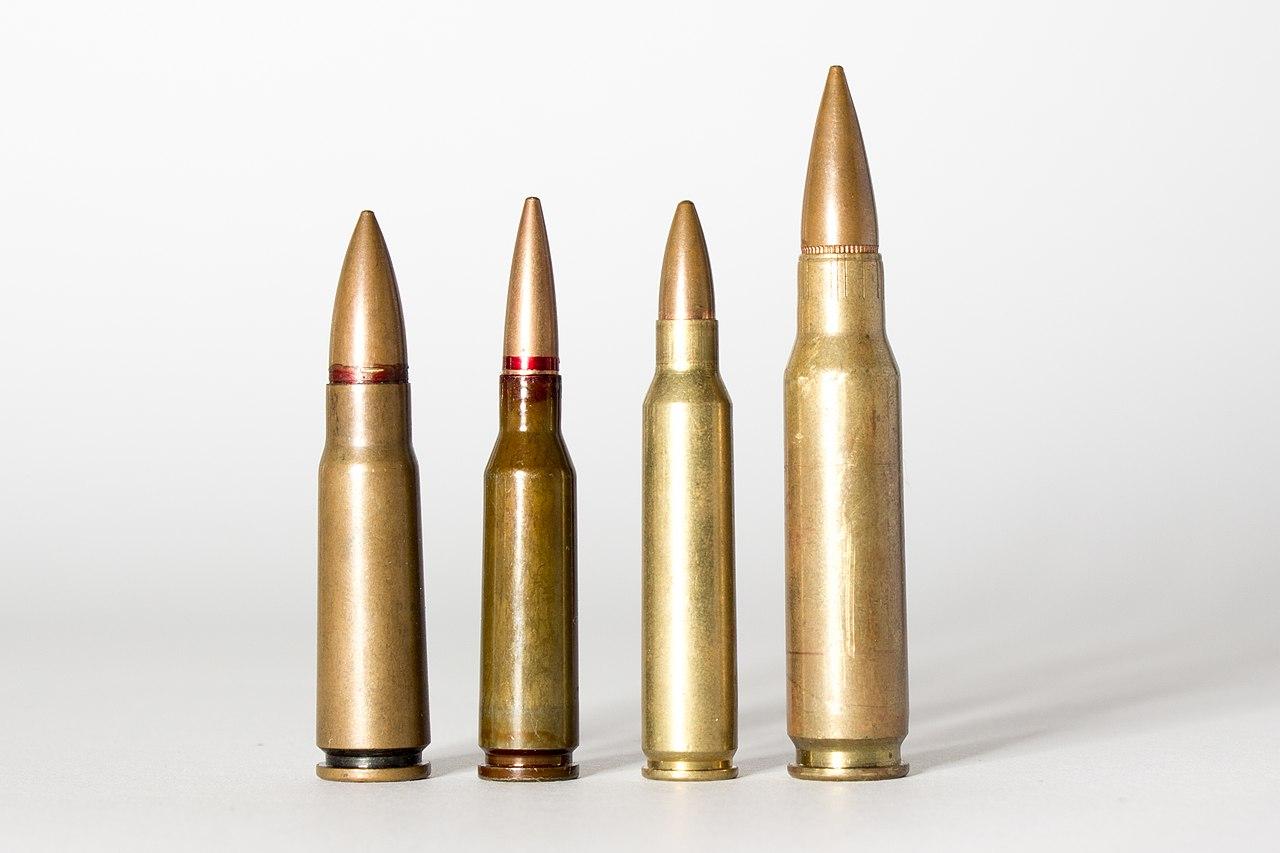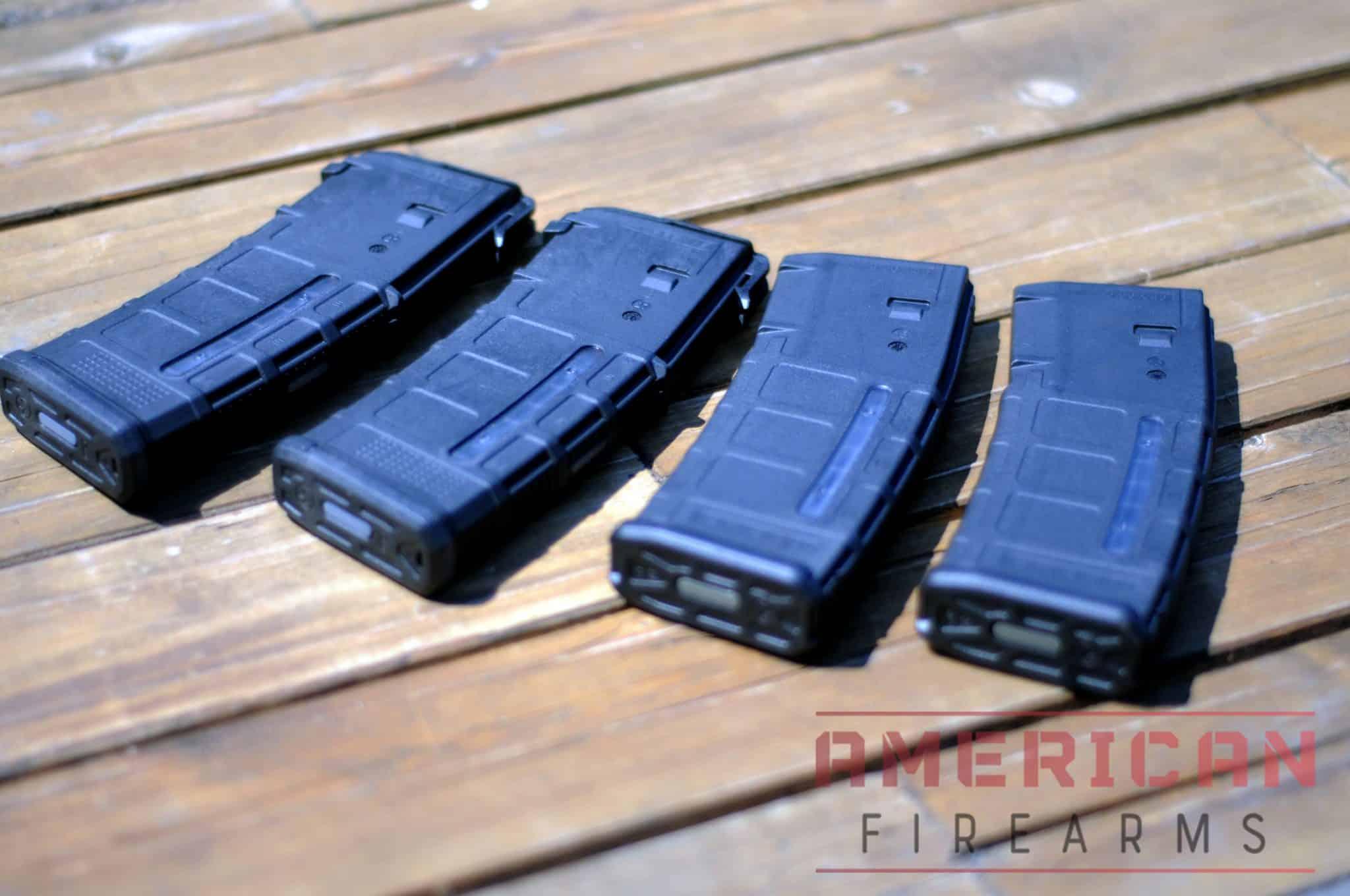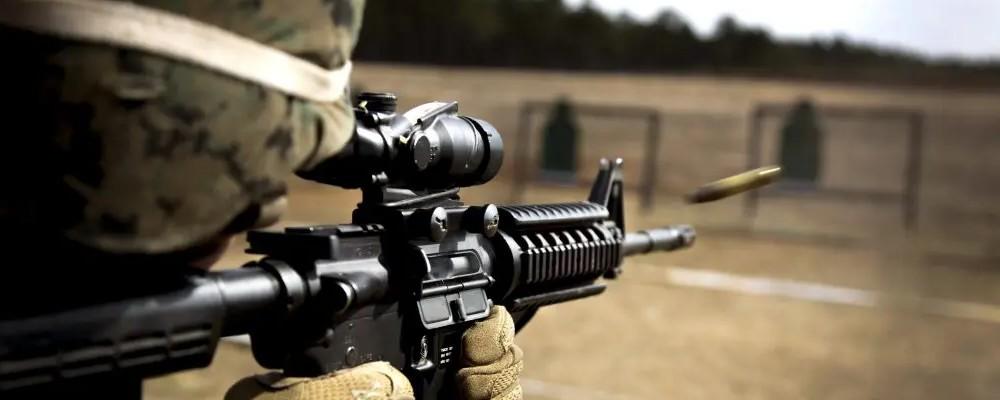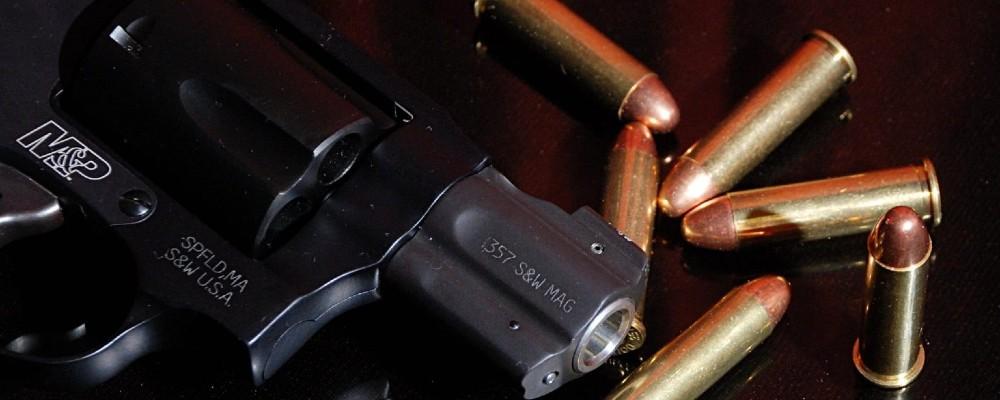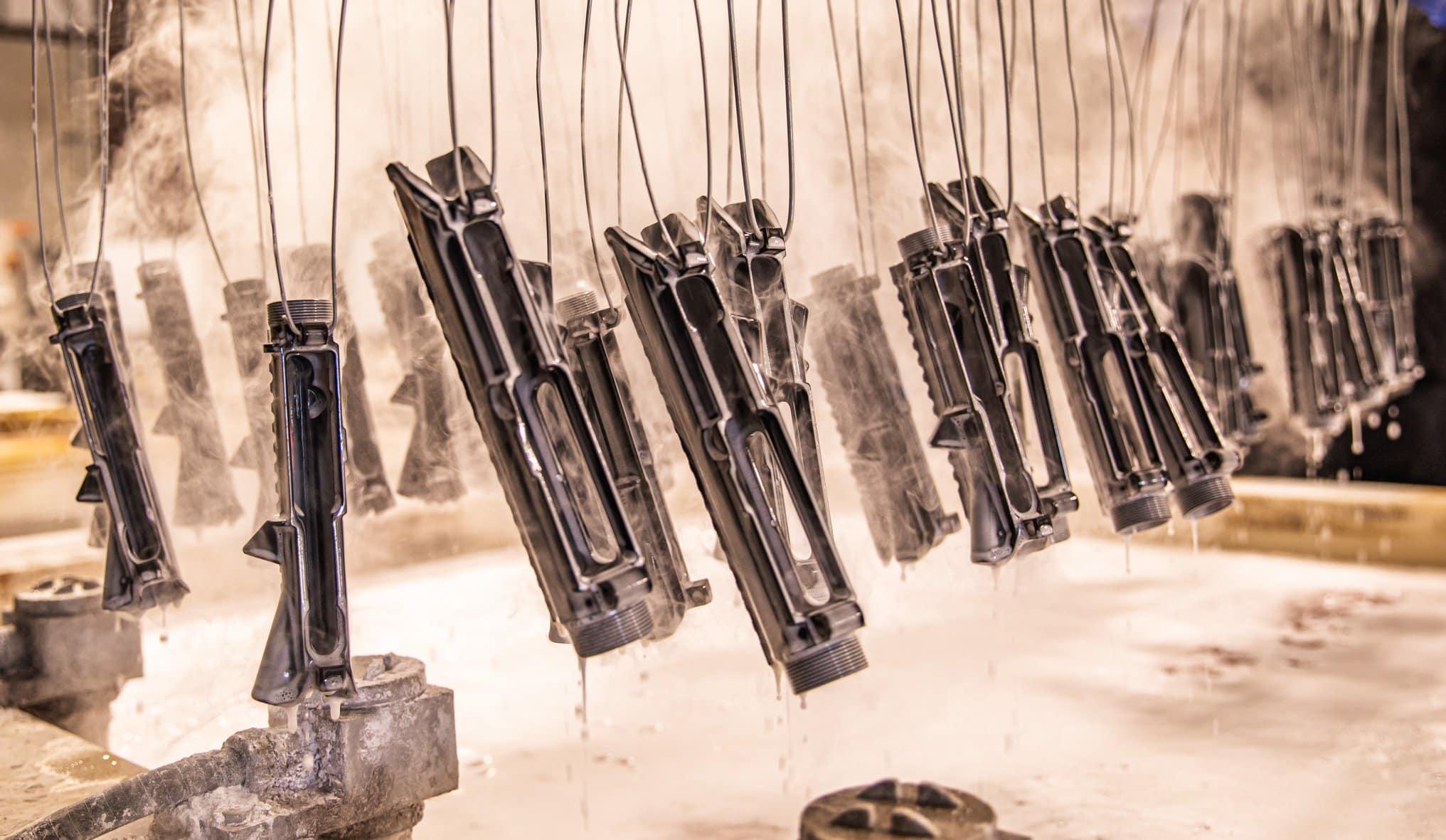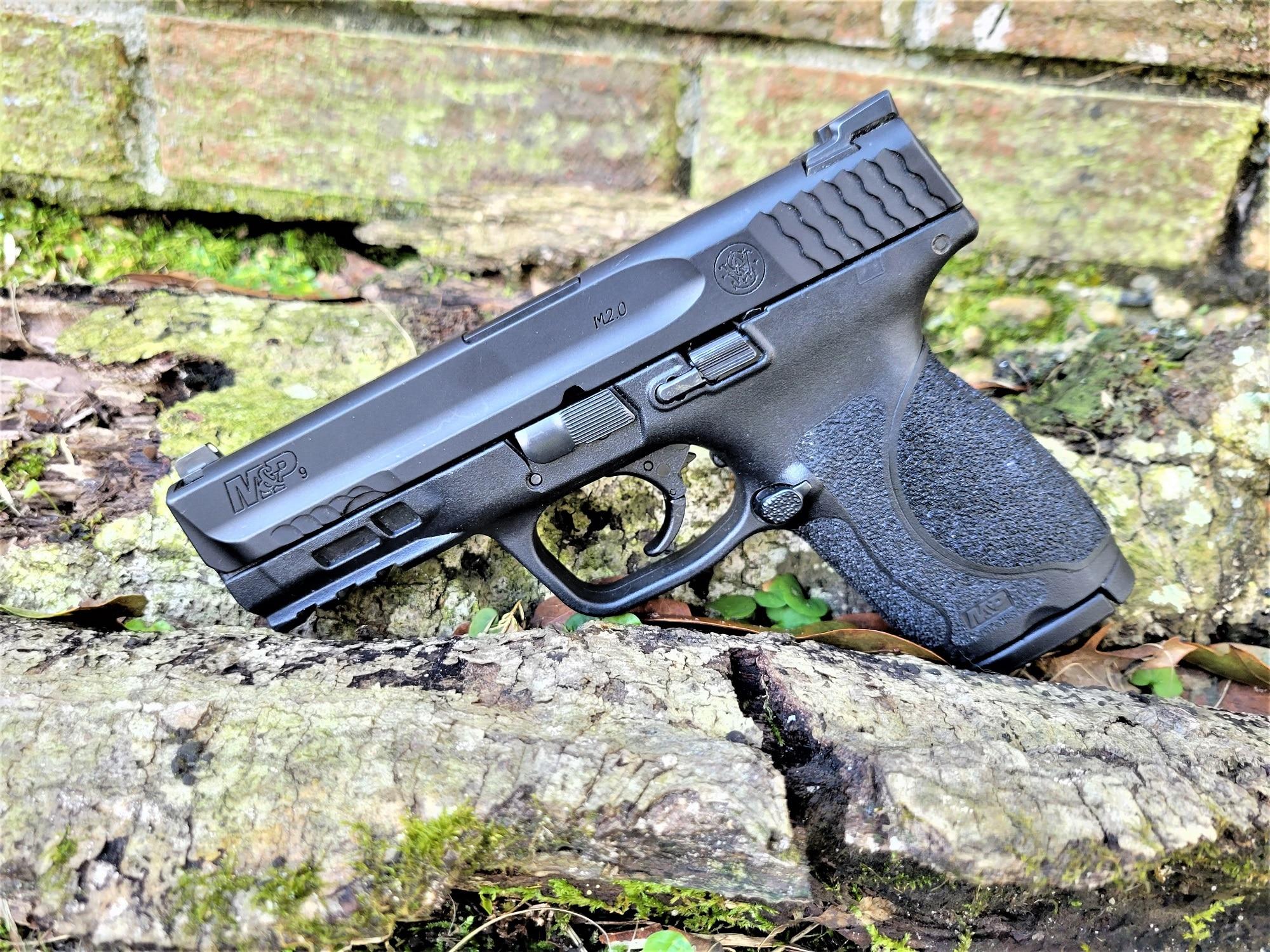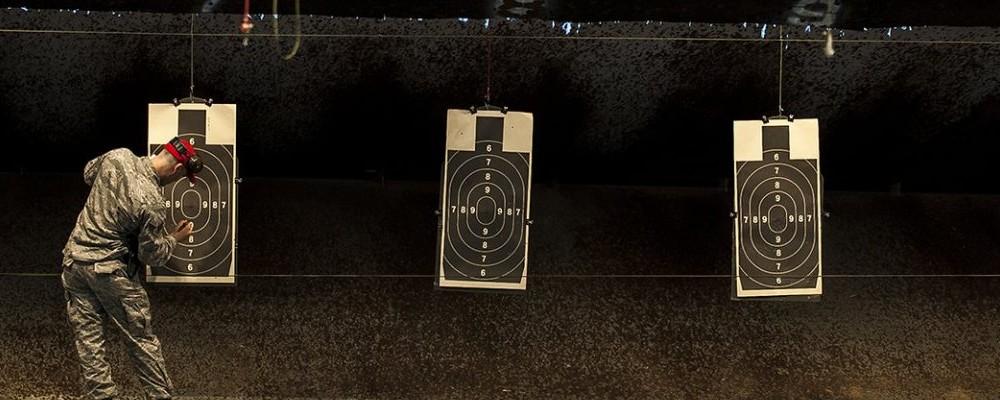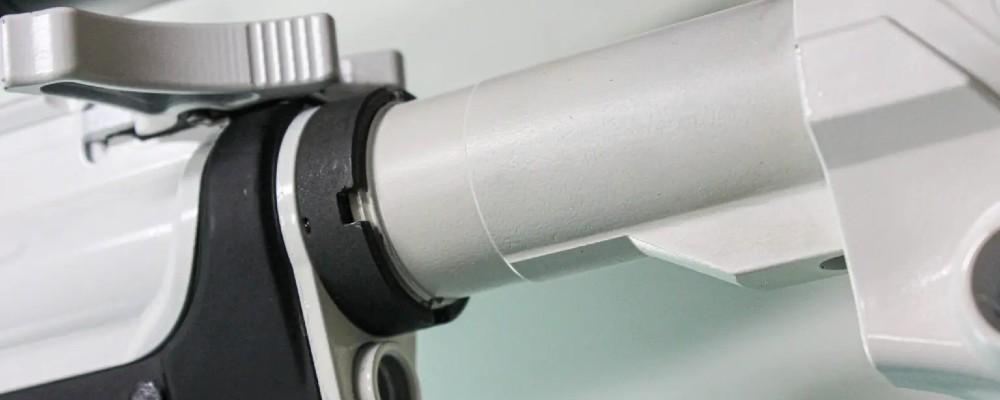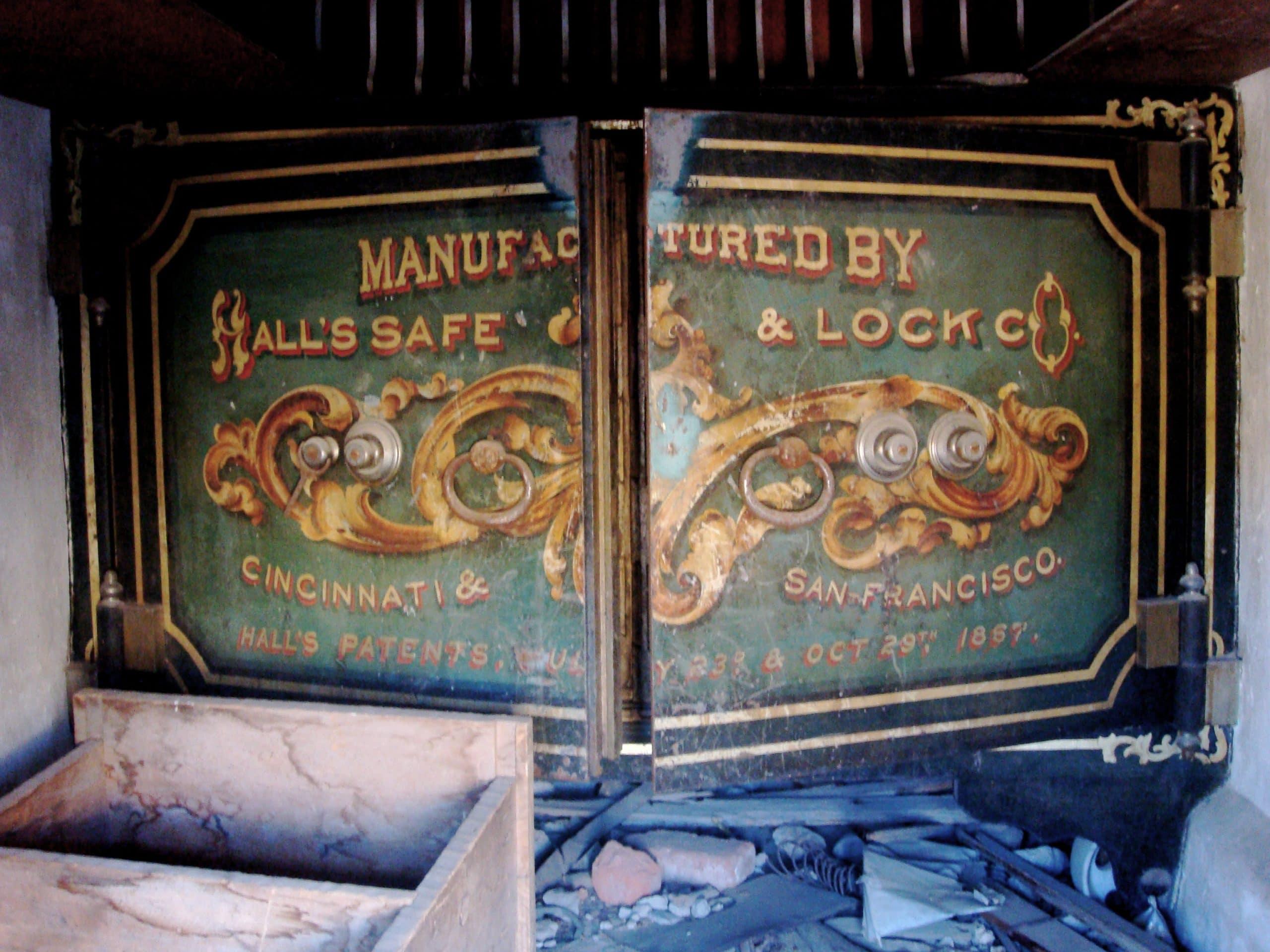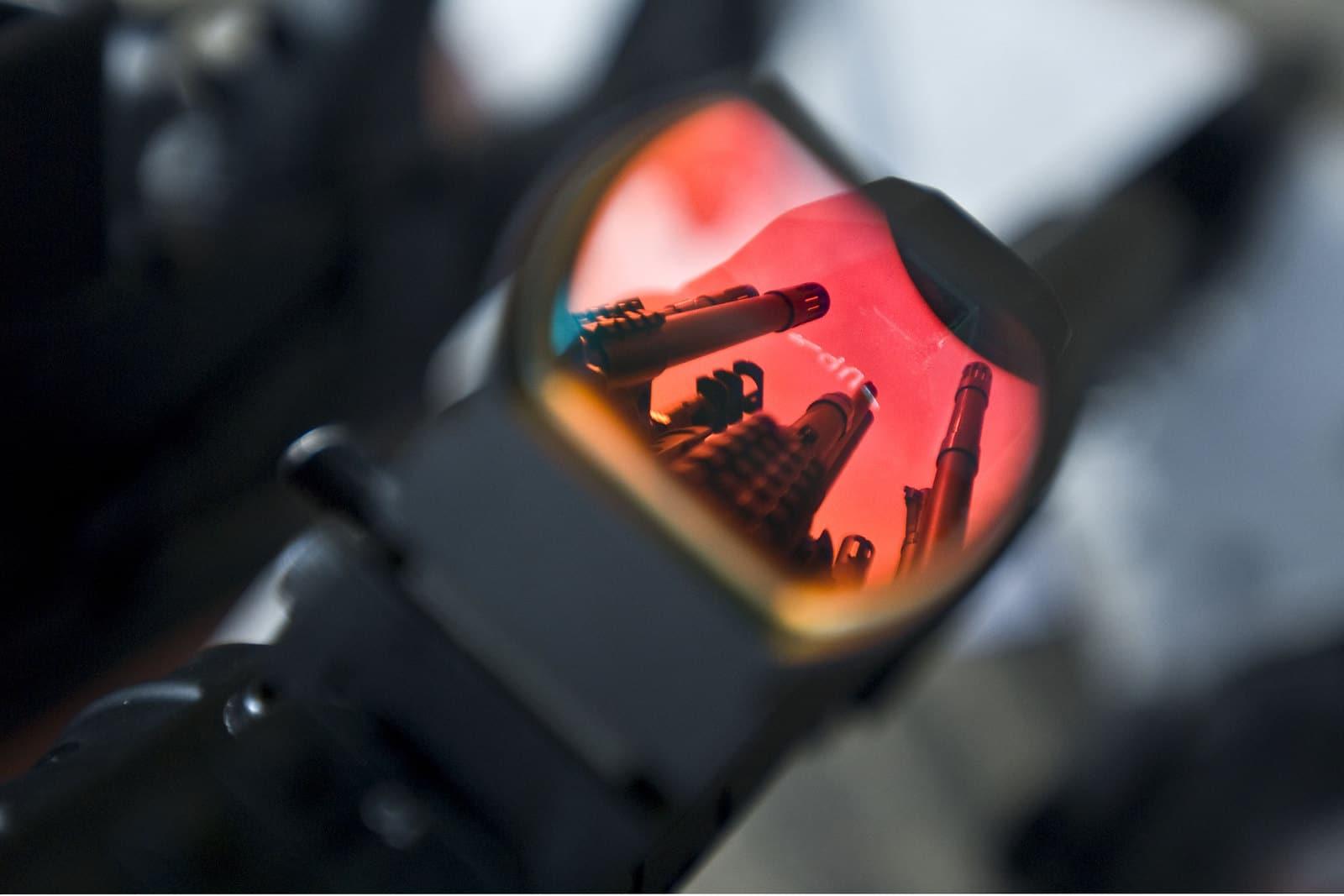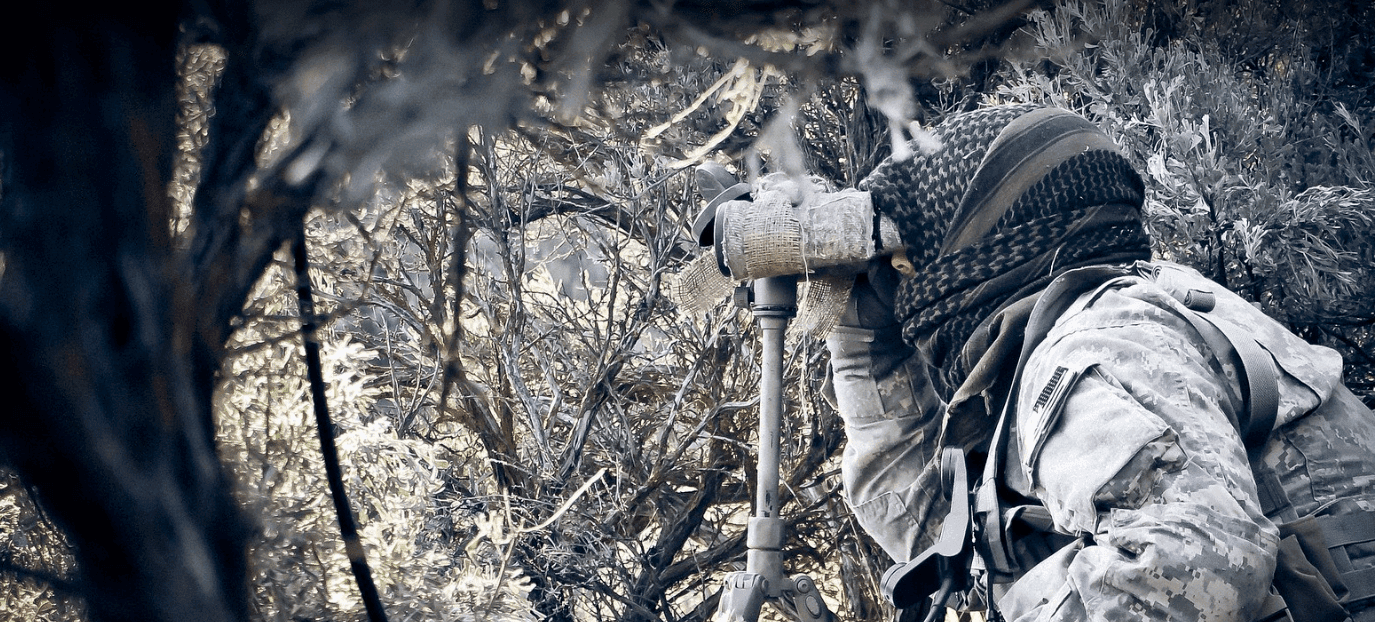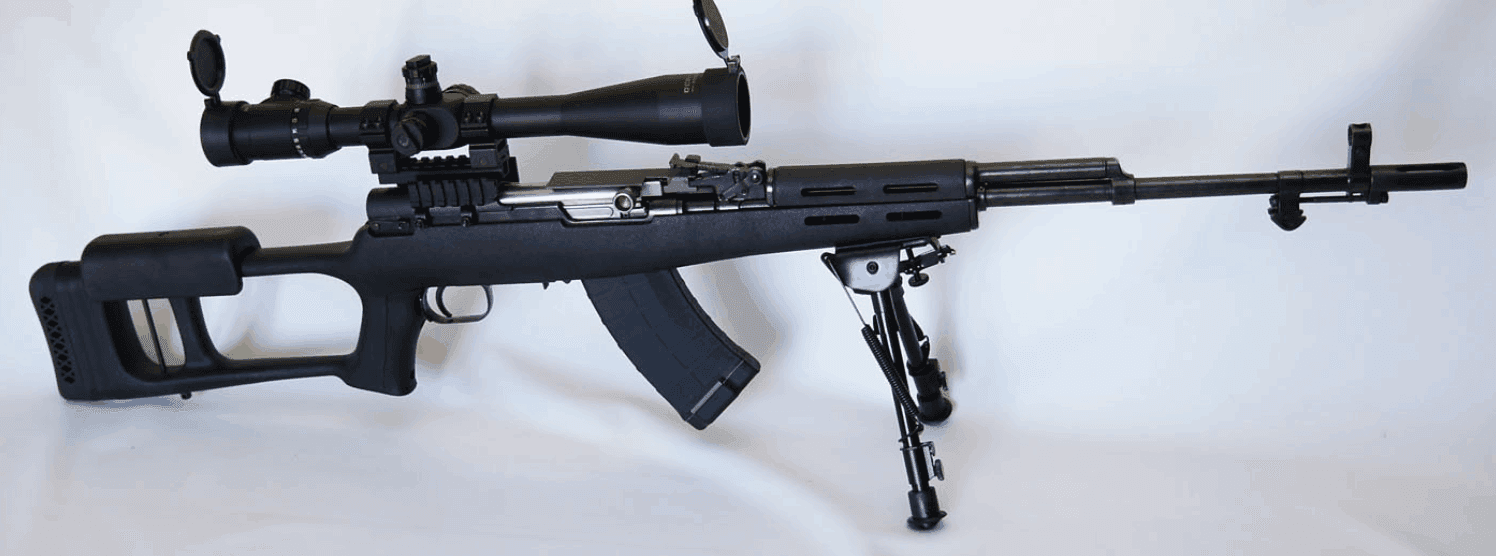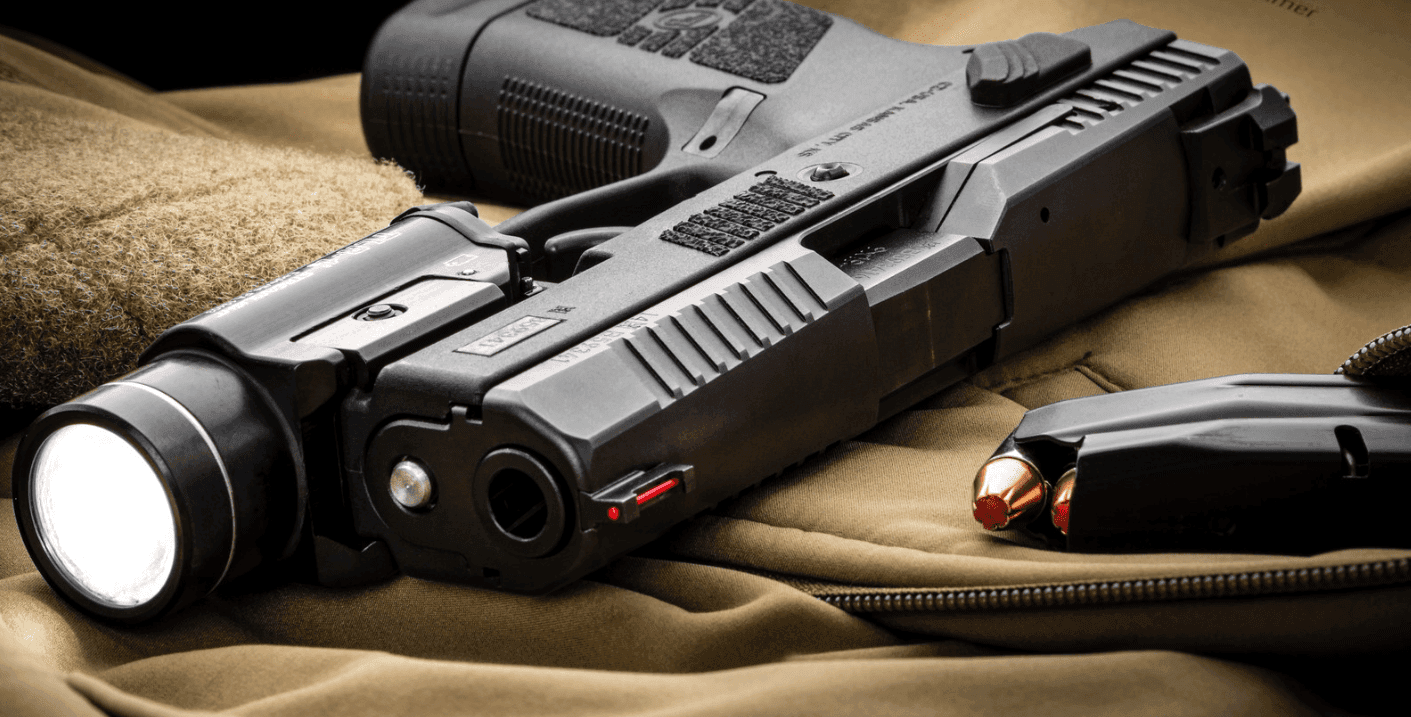The Best 6.8 SPC Rifles
Written By
Michael Crites
Licensed Concealed Carry Holder
Reviewed by
Editorial Team
Learn About The Editorial Team
Share:
Products are selected by our editors. We may earn a commission on purchases from a link. How we select gear.
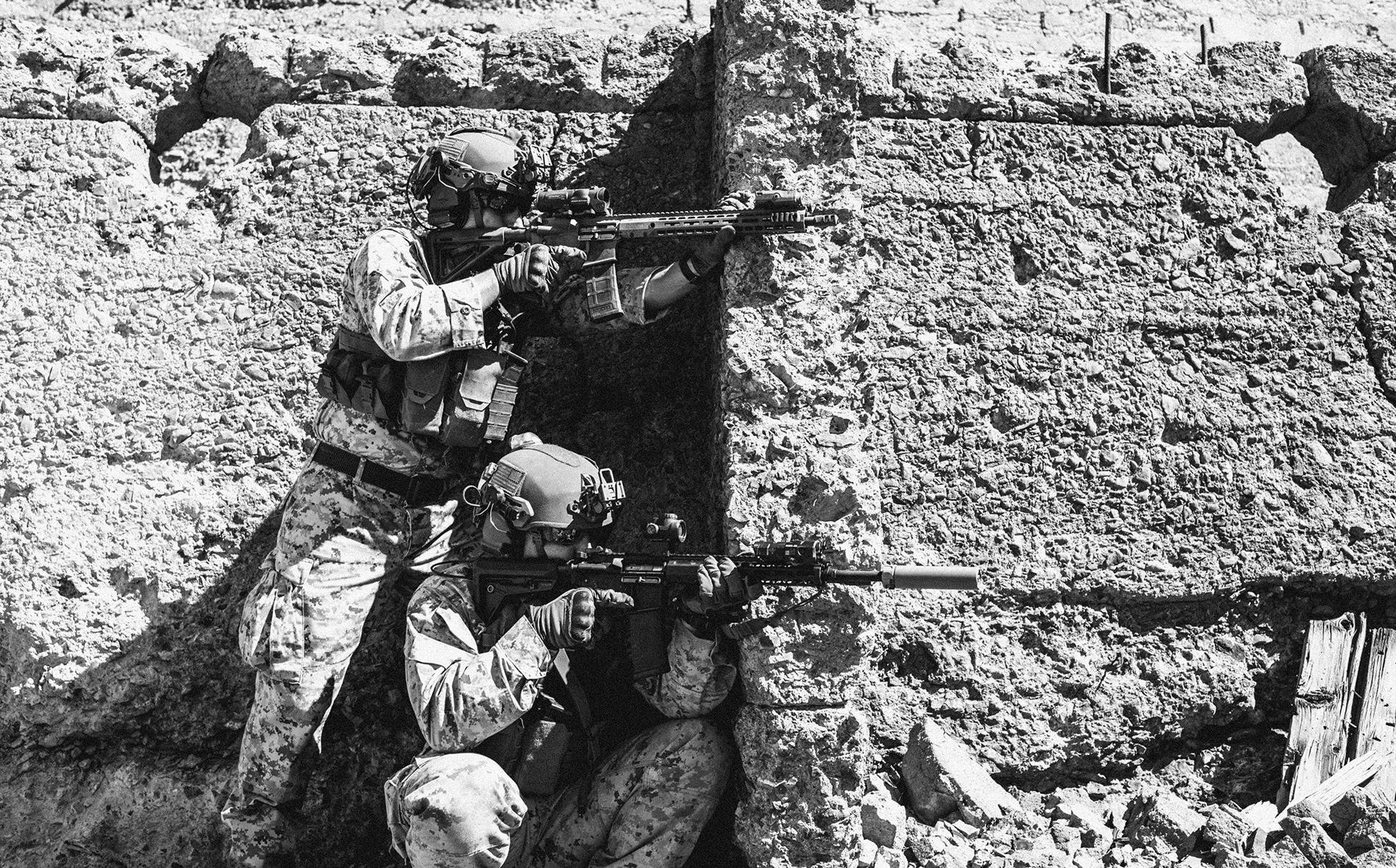
Updated
Mar 2023
What is the 6.8 SPC and what makes it exciting? Designed to essentially split the difference between the 5.56 and 7.62 NATO as an intermediate cartridge, the caliber is interesting, brings a lot to the table, and coupled with the right rifle for the round, is exceptionally capable. We look at the cartridge, break down the features, and provide a selection of great 6.8 SPC rifles.
In This Article
6.8 SPC Rifle Comparison
| Product | Selection | Price |
|---|---|---|
Best Overall | $1,946 | |
Premium Pick | $2,860 | |
Also Great | $2,865 | |
Budget Pick | $719 | |
Budget Runner-Up | $1,050 | |
Also Great | $1,399 | |
Also Great | $2,500 |
What to look for in a Quality 6.8 SPC Rifle
Barrel Length
A key benefit of the 6.8 SPC is that it likes comparatively shorter-length barrels. Whereas you still see lots of 5.56s and .223s with full or competition-length (20 to 24 inch) barrels, a long 6.8 tapes out at 18 inches with many being shorter.
The cartridge also performs particularly well in barrels down to as short as 10-inches.
Takeaway: don’t burn energy searching for lengthy barrels on your 6.8 as it favors true carbine-length sizes and below.
Maker Reputation
In the early 2000s, with the 6.8 being the hot new round and the federal “assault weapon” ban expiring, overnight there were dozens of new AR makers popping up like mushrooms with several offering an SPC build, one for which there was no “mil-spec” to fall back upon. Most of those companies are now gone but left a bad reputation behind.
Coupled with this is some of the biggest names in the 6.8 market at first, DPMS and Bushmaster, suffered from declining quality in the last few years of production, spoiling their past work in the minds of many. Today, when looking for a well-built 6.8, look for the big and reliable names such as Barrett, Daniel Defense, LWRC, and the like. We have a list for you.
6.8 SPC II Chambering
Since the cartridge’s introduction, there have been several variations and generations of thoughts, load data, specs and chamberings floated for the 6.8 SPC.
In short, today, you want to be on the lookout for 6.8 SPC II. We get more into that below.
Supportability
Just a decade ago, the 6.8 SPC was quick on the way to becoming the second most popular AR-15 chambering. For a variety of reasons, this has atrophied to the extent that several companies that once were big players when it came to the caliber have exited the market.
Part of this is to blame on the Trump Slump of 2016-17 that saw AR prices plummet and companies scramble to stop the bleeding.
Other reasons we talk about later, but the net effect is that for some, the 6.8 ride is over.
For instance, Illinois-based Lewis Machine & Tool used to have a huge 6.8 line, with their CQB, LM8, MLC, and SLK models all clocking in to deliver. However, they have downsized when it comes to the caliber and now Indiana-based LMT Defense just offers some barrel, mag, and BCG options for 6.8 users. The same can be said of Massachusetts-based Yankee Hill Machine. YHM offered Black Diamond, KR7, and Specter series 6.8s going back to 2009 but today just lists a few barrels and accessories.
As a key takeaway, try to stick with models with a good track record and no apparent sign of being folded away.
The Best 6.8 SPC Rifles
1. Best Overall: Daniel Defense DDM4® HUNTER
Georgia-based Daniel Defense produced both 6.8 uppers and a dedicated 6.8 rifle, the DDV6.8, for years. However, today the only gun in their catalog that caters to the cartridge is a version of their DDM4 Hunter line.
Using an 18-inch S2W barrel that is threaded in 5/8×24 TPI and clad with an MFR 15-inch free-floating handguard with a full-length Pic rail on the roof and M-LOK slots everywhere else, it only weighs 6.9-pounds. Shipping with a PRI 5-rounder and Geissele Super Semi-Automatic, 2-stage trigger, it wears a hydro-dipped Kryptek Highlander camo pattern.
2. Barrett REC 7
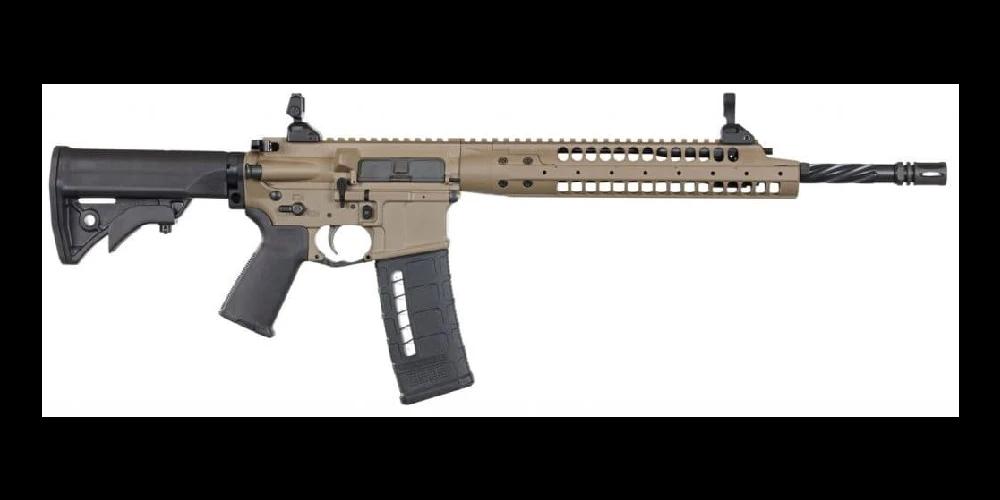
$2040.99

37
AVERAGE
2026 Awards & Rankings
Performance Scores
The first company to market a 6.8 SPC-chambered firearm when the M468 was brought to market, Barrett long ago replaced it with the REC7 DI, which has options in 5.56 NATO, 6.8 SPC, and 300 BLK. Lightweight, at just 6.2-pounds, it has a 16-inch barrel and a direct gas impingement action.
The REC 7 GEN II, a piston gun with a one-piece 17-4 stainless piston instead of the DI system, has the same specs but runs cleaner. The 6.8 versions of both models are getting harder to find as they were discontinued officially late last year but keep looking for one, they are worth it if you can find them.
3. LWRC SIX8
At this point, LWRC International is the biggest player in the 6.8 SPC game. Enjoying large overseas contracts for the platform, their top-notch SIX8 line is both extensive and fixes the biggest problem the 6.8 had in terms of use in an M4 style firearm– a reliable magazine that matched the same capacity as seen with the 5.56 NATO caliber M4.
4. Radical Firearms AR-15 RPR
Radical’s 16-inch 6.8 SPC II build is a great way to get into the 6.8 world without going into hock.
Using a 4150 Chrome Moly Vanadium heavy barrel with a Melonite finish, it comes complete with a free-floating 15-inch M-LOK thin rail handguard and uses a 15-round mag. It is a DI action gun with anodized forged 7075 T6 receivers.
5. Rock River Arms LAR-15M
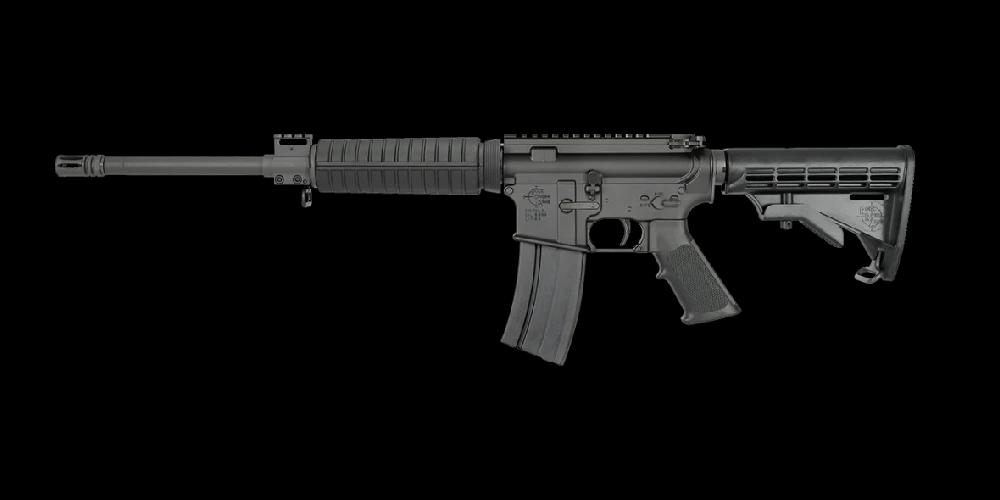
$1123.99

32
AVERAGE
2026 Awards & Rankings
Performance Scores
The LAR-15M 6.8 series of rifles and uppers from Rock River Arms has a lot of variety for not a lot of money. Using 6.8 Rem SPC II chambers to accommodate recent developments in ammo lines for the cartridge, Rock River has at least four of these guns in production, all with a 1.5 MOA at 100-yard accuracy guarantee.
X-Series X-1: Uses an 18-inch fluted stainless steel barrel, free-floating M-LOK handguard, and 2-stage varmint trigger. It is available in several different finishes and buttstock options.
CAR A4: Running just 36-inches overall with a 16-inch barrel, it has a CAR-length gas system, this 6.8 has a classic, retro aesthetic.
Mid-Length A4: A 16-inch Chrome Moly Vanadium heavy barrel carbine with a mid-length gas system, 2-stage RRA trigger, M4 style 6-position buttstock, and a round handguard.
Coyote Carbine: With a 16-inch barrel that ends with a Smith Vortex flash hider, a low-profile gas block under a free-floated 12.5-inch handguard with M-LOK slots, and an RRA Operator CAR stock, this Rock River 6.8 has a distinctive look.
6. Stag Arms Super Varminter
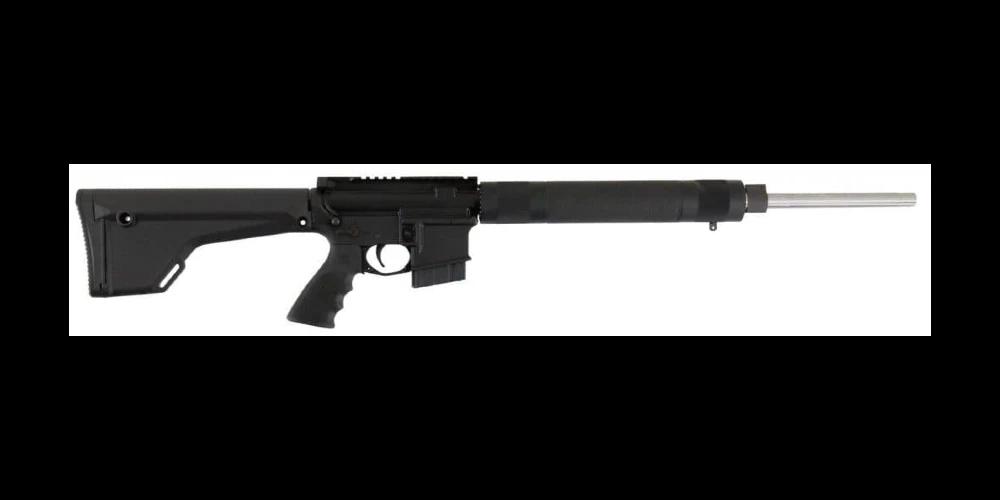
$1173.99

28
AVERAGE
2026 Awards & Rankings
Performance Scores
Stag delivered their Model 5 model in 6.8 SPC to the market over a decade ago and has delivered other rifles and carbines in the caliber since. However, the Stag offerings today chambered in 6.8 mm are geared towards hunters, with the Stag 15 Super Varminter being their headliner.
Using a 20.77-inch 416R stainless heavy barrel with a SAAMI SPEC II chamber, it has a 1:11 twist rate for the newer 6.8 loads.
Standard features include a 16.5-inch SL Quad handguard, Magpul MOE pistol grip, and fixed rifle stock.
7. Wilson Combat Recon Tactical
Bill Wilson’s Arkansas-based custom shop, Wilson Combat, has embraced the 6.8 and continues to make several quality rifle models to take advantage of the round, be it for home protection, SRT/SWAT teams, or those seeking a serious hunting rifle.
They make three different carbine-length build options, all with 6.8 SPC II chambers and billet receivers.
History of the .6.8 SPC Round
It had long been thought, going back to lessons in World War II, that a cartridge firing a .270 caliber (6.8 mm) bullet could outperform larger, .30-caliber, rounds in infantry rifles and carbines. The British at the time tested a .270 Enfield load7.62 NATO
Fast forward to 2004.
As detailed by U.S. Army Major Thomas Ehrhart, the special operations community, reflecting on fighting in Afghanistan after September 11th, still liked their M4s but found themselves wanting a more lethal cartridge.
“Two master sergeants took the historical information about effective calibers and tested cartridges in 6mm, 6.5mm, 6.8mm, 7mm, 7.62mm cartridges that would work within the system limitations of the M16/M4,” explained Ehrhart of what was initially called the Enhanced Rifle Cartridge project. “They discovered that 7mm was the most devastating caliber and that 6.5mm was the most accurate caliber for the above range. The 6.8mm caliber offered the best compromise in accuracy and lethality.”
Black rifle scholar Chris Bartocci in 2006 credited MSG Steve Holland of the 5th Special Forces Group, working in conjunction with gunsmith Cris Murry of the elite Army Marksmanship Unit, with the design of a “military .270.”
Using the .30 Remington AR cartridge, which the AMU had tapped for their competition rifles at the time, the parent case was shortened, given a new shoulder and a larger maximum capacity for high-performance propellant. Holland and Murray sent their data to Remington for final development and production that would become the 6.8x43mm Remington Special Purpose Cartridge or 6.8mm Remington SPC.
In testing, Murry said in June 2003,
“The gel block tests are awesome. It drops a 150-300 lbs. feral hogs like an axe, also works great on whitetails.”
At the National Defense Industrial Association’s annual military small arms symposium in early 2004, the new 6.8 SPC was highlighted by the ammo maker.
There, Remington engineer Greg Dennison explained why Big Green went on to develop the cartridge internally:
“to provide increased lethality and better long-range capability than current 5.56mm NATO or 7.62×39 through higher energies.”
By 2005, Remington subsidiaries Bushmaster and Panther Arms were working on SPC model AR15s for the consumer market which would be ready as soon as the ammo was available commercially.
However, Barrett Firearms, with their M468 (M4 in a 6.8 caliber), offered in either a standalone upper or a full-up carbine, would be the first firearm ready for the new cartridge, showing it off at the AUSA Meeting in late 2003 even before ammo was being made.
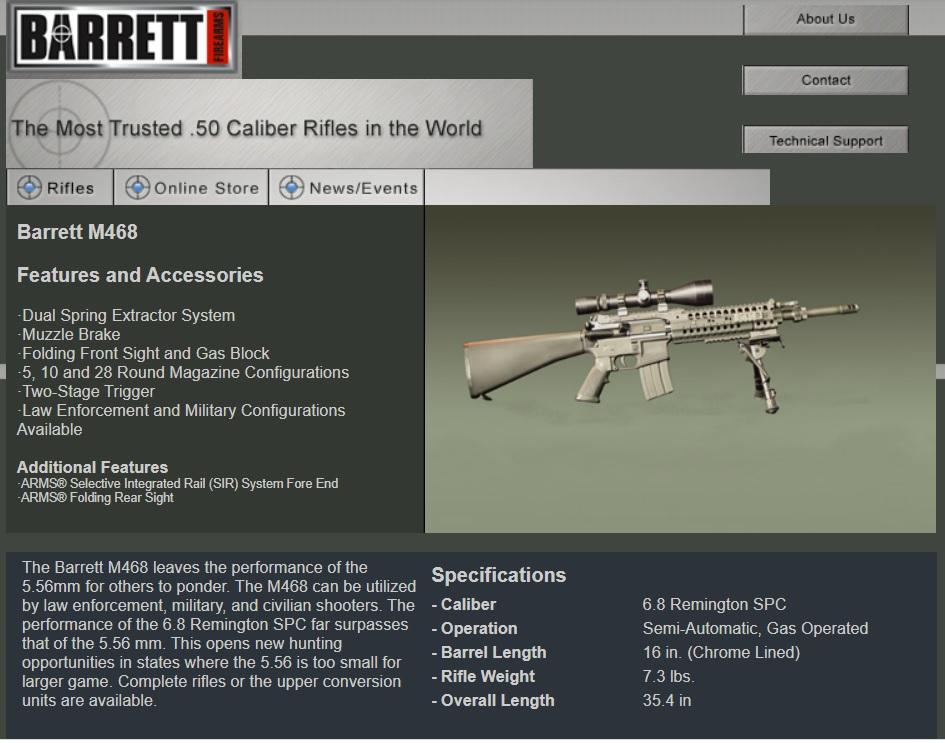
The public got its first real taste of the 6.8 SPC in a March 2007 episode of Mack Machowicz’s Future Weapons on the Discovery Channel which featured Ronnie Barrett and his M468.
Outside of industry events and military expos, it was the first big exposure to the round. Barrett noted:
“It has diameter, and it has weight, and it has kinetic energy, and it has what it needs to kill on the first round.”
He pointed out that the cartridge had been developed after recent post-9/11 experience in Afghanistan against “near kamikaze” type close-up attacks.
This led to a boom in 6.8 SPC popularity.
By 2011, there were at least 30 gun makers with either a dedicated rifle or upper in their catalog chambered in the caliber. Daniel Defense started making a rifle for it, the DDV6.8, as did companies such as Christensen, Cobalt, Olympic, Stag, and others.
Even Ruger got into the game with versions of their SR556 and Mini-14 (!) chambered for the round. For a few years, many common bolt-action hunting rifles, such as the Browning A-Bolt, Ruger M77, and Remington Model 700, were available in 6.8, although the round was never intended for use with such designs.
Since then, growth in the 6.8 arena has narrowed, especially once Remington itself began starving off its modern sporting rifle lines at Bushmaster and DPMS after 2013. Today, the cartridge and its firearms are still very much in production but are just not as popular as it used to be, and we’ll talk about that in other sections.
.6.8 SPC Specifications
Essentially a development of the .30 Remington AR cartridge, which can also be seen as a rimless .30-30 Winchester, the round that became the 6.8 SPC used a shell body diameter larger than 5.56mm NATO– although it is the same cartridge length– but just smaller than 7.62×39.
Early specs had the cartridge running 55,000 psi MAP in terms of chamber pressure. Key in its design was the fact that it could use a standard AR15/M4/M16 lower receiver, simply converting the gun to fire the newly developed cartridge by swapping out the upper receiver for once chambered in 6.8 (or even just the barrel, bolt, and bolt carrier).
Due to the cartridge’s neck and bullet profile, although it could use a standard M16 box magazine, after the first few rounds the magazine would swell and bind, meaning they had to be downloaded.
With the issue corrected using specially-designed mags that had their internals optimized for 6.8 SPC, in most cases only 27 to 28 rounds of 6.8 will fit in what was normally a 30-round sized magazine when using 5.56, so there is a slight loss of magazine capacity.
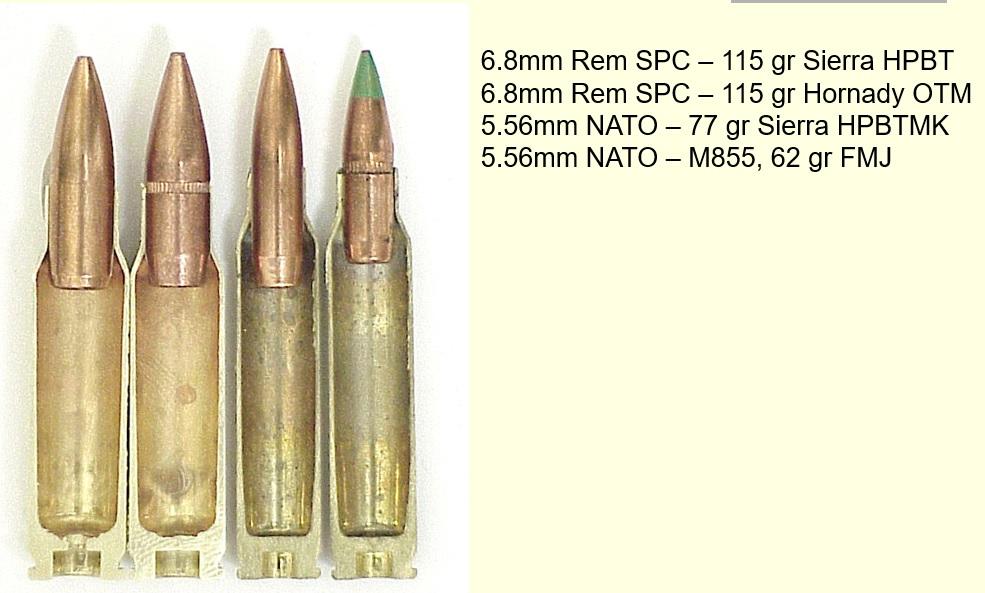
Ballistic performance of the 6.8 SPC
While loads for the cartridge cover everything from 85- to 140 grains most common factory loads for the 6.8 SPC as we know it today tend to be in the 100-to-120-grain neighborhood.
Splitting the difference in that, let’s look at Hornady’s 110 gr V-MAX load for the cartridge from their Black line. This load delivers 2,550 fps at the muzzle, dropping down to 1,893 at 300 yards, while bringing an impressive 1,588 ft/lbs. of energy and keeping 875 of that at three football fields. In terms of trajectory, it offers impressive accuracy — flat to near-flat (within 2.5 inches up or down) to 200 yards and drops 10.4-inches at 300.
After that, all bets are off as the bullet weight starts to outrun the velocity and it rainbows down dramatically, being minute of man at 500 yards.
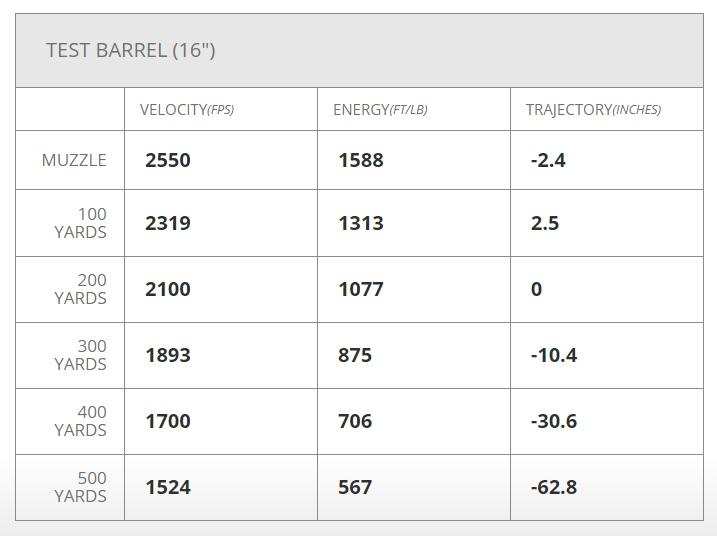
Keep in mind the above is from a 16-inch carbine-length test barrel.
The 6.8 SPC, with its special ops lineage of use by commandos who prefer the shortest guns possible so they can easily do things like jump out of airplanes and climb out of submarine hatches, offers better terminal performance when fired out of pistol and SBR-length platforms. For example, keeping 2,300fps and 1,300 ft./lbs. out of a 10.5-inch barrel. That’s tough to beat.
The ballistic coefficient of the 6.8 SPC is higher than the 5.56 due to the shape and weight of its bullets. For example, in most 110-grain loads the 6.8 runs a BC in the .360 to .370 range compared to the 55-grain 5.56’s .185 to .257. What this means is the 6.8 will bring more of that energy downrange with it.
The cartridge can be loaded to deliver amazing terminal effects on target.
Users of the 6.8 SPC
Although developed initially as a side project for Uncle Sam, the 6.8 SPCs use was limited in U.S. military service. Reports are that USSOCOM bought quantities of M468 upper receivers from Barrett for a few years to give the round some field trials but, as the early ammo developed by Remington didn’t quite meet the potential it promised without being too spicy for the initial chambering that was adopted, they passed.
However, the round has seen some adoption overseas with Saudi Arabia in 2012 ordering guns from LWRC in the caliber for the elite the Saudi Royal Guard Regiment while Jordan put the 8-inch PDW variant into limited production under a license from LWRC for use there by that U.S. ally.
Purpose of the SPC
The 6.8 SPC was developed by the military to up the lethality of their M4 Carbine systems, especially at close ranges, while requiring minimal changes to the gun. Since then, it has gone on to see widespread use with consumers both in harvesting game and as a round used in conjunction with modern sporting rifles.
The difference between 6.8 SPC and 6.8 SPC II
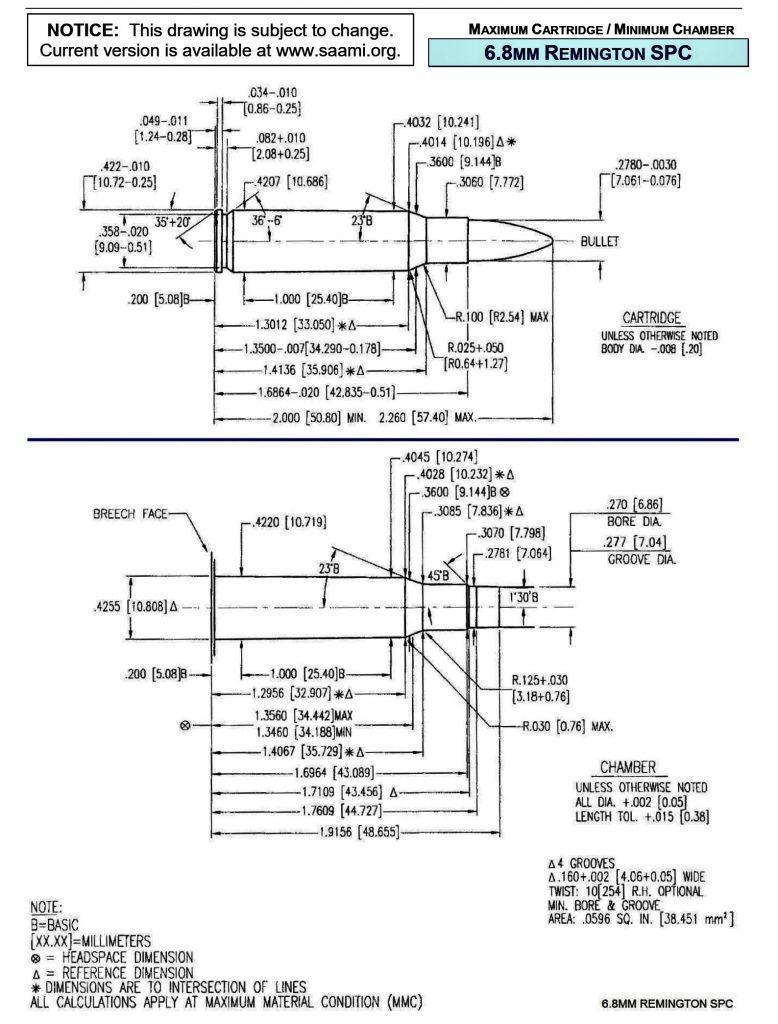
There is no 6.8 NATO standard.
Without getting too much into the inside baseball of the matter, the initial 6.8 SPC chambering developed by Remington and adopted by SAAMI has morphed over the years.
While most early rifles used a barrel with a 1:10 twist rate and a shallower throat for cartridges with a lower pressure load/power curve to keep the gun safe, newer chamberings trend towards the 6.8 SPC II which has a longer throat and a decreased freebore or special hybrid chamberings like Noveske’s Mod 1 design.
While the original was developed by Remington, the SPC II update came from enthusiasts and members of the 68forums to correct what they felt were holdbacks to the initial design.
The SPC II chambering will allow handloaders, wildcatters, and custom ammo makers to wring a bit more performance from the cartridge, especially when using .270 bullets. However, as it can accommodate stronger pressures developed by such loads, using ammo developed for SPC II chamberings in legacy SPC rifles can potentially unsafe.
As far as consumers, guns, barrels, and uppers should be clearly marked by the manufacturer if they are SPC or SPC II standard, even if the bulk of factory ammo is still at the older threshold.
6.8 SPC Vs Other Cartridges
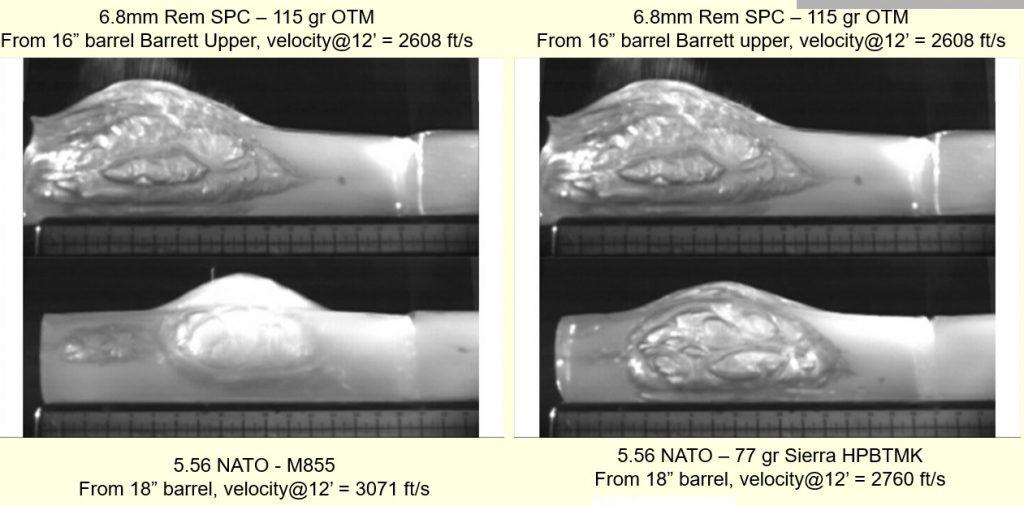
Fundamentally, when looking at the 6.8 SPC, it performs roughly in the same envelope as the old .30-30 Winchester but allowing for a much better bullet design and delivers akin to the Russian 7.62×39 M43 round used in the AK and SKS series of carbines, but with more accuracy potential and long-range performance.
The 6.5 Grendel— which has the same overall length– is often held up as a superior option to, and “a killer” of, the 6.8 SPC, which, coupled with the increased availability of 6.5 Creedmoor in AR10/AR308-sized platforms in recent years, has sliced away the market for the round.
However, while the Grendel does put some negligibly better velocity and energy figures up compared to the SPC at ranges past 100 yards, the difference isn’t earth-shattering, typically just gaining 100fps and about 200 ft/lbs.
Also, since the Grendel has a higher ballistic coefficient on most loads, it shoots flatter, but, as with velocity, it is only a little improvement.
For example, at 300 yards, a Grendel will typically have an 8-inch drop with the most common 120-grainish factory loads whereas an SPC will be closer to 11 inches– but keep in mind that higher BC in the 6.5 also helps in retaining energy on target at that distance.
As a trump card to the argument on the SPC’s behalf, the 6.8 is optimized for shorter barrels than the Grendel and will outperform it in pistol and SBR formats at the muzzle and CQB ranges, and the round will deliver its peak performance out of barrels as short as 16 inches, whereas the Grendel hits its peak out of 20s.
When stacked against another 7.62x39mm performance doppelganger, the .300 Blackout, the SPC is evenly matched for the first 200 yards, with both delivering exceptionally and with more effectiveness, especially in terms of terminal ballistics against barriers, than a 5.56.
However, at 300 yards, the Blackout drops a whopping 30 inches more than the 6.8.
Has the sun set on the 6.8 SPC?
Things have changed since 2007. Mack Machowicz has, sadly, passed. Future Weapons has been off the air, even in reruns, for almost a decade. New .243, .27 and .30-caliber rounds for AR platforms like the .350 Legend, .277 Fury, and the 6mm ARC have entered the market and are making headways with consumers, boosted by big ad buys from household names in the firearms industry looking to sell curious shoppers the next “gamechanger.”
It has gotten to the point that the cartridge itself has even been the starting point for other “gee-whiz” rounds like the .224 Valkyrie, which uses the 6.8’s case with a smaller bullet.
None of this means that the 6.8 SPC has stopped being a good cartridge. It still brings dramatically more performance– over 50 percent more energy with a much larger bullet– from the muzzle of an AR15 than 5.56 NATO, keeping that delivery at ranges under 200 yards.
It will deflect less and deliver more, especially in shorter barrels. This makes the round a better choice for potential urban tactical situations and for sportsmen brush hunting medium game such as whitetails and wild hogs. Speaking to hunting, it is state-approved for harvesting medium game in most places, something the 5.56 likely won’t ever be.
Top shelf AR rifle and upper makers are still cranking them out and ammo companies are still filling factory-fresh boxes. So, no, while the 6.8 is being crowded out of the market, it is still in the market for now and will be for the foreseeable future.
With that being said, for those going the 6.8 route, it may behoove them to get into saving their brass and taking up reloading as a hobby– just in case.
Shortcomings
Even though it has been on the market in one form or another for two decades, the 6.8 SPC is still seen as a niche round for many. This means that local gun stores and even big-box sporting suppliers either don’t carry it on the shelf or have to special order it– even disregarding exceptional circumstances like the recent national ammo shortage.
This also means you are buying 20-round boxes of bespoke rounds designed for sporting purposes with advanced bullet types such as HPBTs, SSTs, and dynamic ballistic tips, not 200-, 500- or 1000-round bulk packs of FMJ such as with more common AR15 chamberings in 5.56/.223 or AR10s in 7.62 NATO.
Harder to find and more expensive, 6.8 is sold and inventoried more as a deer round than for guys looking to stock up for a home defense carbine. This inhibits extensive training. For instance, when attending a 3-day tactical carbine class where you may drop 500 rounds on metal and paper targets in quick succession, would you take the 6.8 or a 5.56?
When it comes to magazine capacity, the 6.8 drives down the standard AR/M16/M4 mag from the ability to hold 30 and insert on a closed bolt to just holding a reduced 27 rounds—if you are lucky. The few exceptions for that, such as Magpul’s dedicated 6.8 PMAG, are not common and are often platform-dependent.
For instance, the 6.8 PMAG is only billed as functioning to expectations with the LWRC Six8 line, although that mileage may vary.
In another ding, for those looking at every ounce and gram on their platform, a fully-loaded mag of 27 6.8s is also about one-third heavier (1.06-pounds in a GI aluminum mag) than 30 rounds of 5.56 (0.76-pounds in the same mag). It may fit the same AR mag, but it also brings a bigger bullet along for the ride, which is going to add up should you carry lots of them.
Finally, with the higher pressures at the chamber, the 6.8 gives more felt recoil to the user than the 5.56, which impacts both the user experience as well as rapid follow-up shots on target.
Parting shots
The 6.8 SPC, especially in SBRs and large format AR pistols, is one of the most effective “black rifle” cartridges at close (200 yards and under) ranges, delivering more kinetic energy on target than any 5.56 ever could.
Developed in conjunction with the military to perform in exactly that sort of bad breath distance, it saw a surge in popularity shortly after it hit the consumer market a decade ago but has been losing steam in recent years due to comparable rounds being released.
Nonetheless, it is a viable option for those looking to be well prepared or to put meat in the freezer.
Updated
March 13, 2023 — Following a comprehensive reassessment of this guide our current 6.8 SPC product recommendations stand. We’ve updated images and links where appropriate.
Sign up for our newsletter
Get discounts from top brands and our latest reviews!

